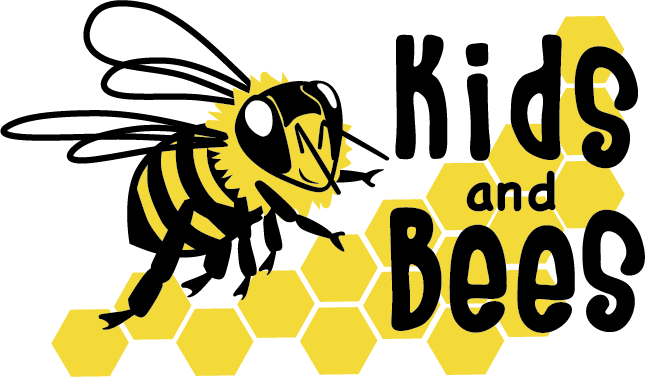
Kids! We need your help protecting and supporting our bees!
Take Action!
Provide food, water, and shelter for the bees in your backyard.
Plant flowers. Some favorites are: sunflowers, phacelia, cosmos, and calendula.
Provide clean water and something for the bees to land on - floating corks, moss, stones, etc.
Make sure you have bare earth for ground nesting bees, old wood, or piles of stems for tunnel nesting bees, or even consider getting a bee hive!
Take part in citizen science! There are a few projects below that you can get involved in by observing bees and uploading your data.
Advocate!
Think hard about why you love bees and why they are important to you, and then:
Writing a poem,
Composing and performing a song,
Creating an art piece,
Make a film,
Then share with your community through social media, a virtual art show, or a socially distanced event.
Support farmers and ranchers who use bee friendly methods to grow your food. Go with your parents to the farmers market or local food co-op and find food producers who care about bees as much as you do!
Educate!
Tell other kids, your family, and your community all you have learned about bees! Participate with an educational booth at the State Fair; a beekeeping, farming, or gardening conference or meeting; or a FFA, 4H, or Scouts event!
The Great Sunflower Project
Goal: To identify where pollinators are declining and improve habitat
Task: Watch a plant, record pollinators, report online
Where: Global, anywhere on the planet
Description: The Great Sunflower Project has three programs. The Safe Gardens for Pollinators program which uses data collected on Lemon Queen sunflowers to examine the effects of pesticides on pollinators. The Pollinator Friendly Plants program which is designed to identify the key plants to support healthy pollinator communities. And, the Great Pollinator Habitat Challenge which allows citizen scientists to evaluate and improve gardens, parks and other green spaces for pollinators.
Some bee populations have experienced severe declines that may affect food production. However, nobody has ever measured how much pollination is happening over a region, much less a continent, so there is little information about how a decline in the bee population can influence gardens.
The Great Sunflower Project makes it easy to gather this information. Find a plant you know (or a Lemon Queen Sunflower), observe it for 5 or more minutes and record all pollinators that visit, and contribute data online. You can make as many observations as you want while your flowers are in bloom. Plant, Watch, Enter. Repeat. That's it. And, who doesn't like sunflowers?!
Try it: https://www.greatsunflower.org
Bumble Bee Watch
Presented By: The Xerces Society, Wildlife Preservation Canada, University of Ottawa, Montreal Insectarium, York University, BeeSpotter, and The Natural History Museum in London
Goal: Help track North America's bumble bees.
Task: Take and submit photos of bumble bees near you.
Where: North America
Description: Bumble Bee Watch is a collaborative effort to track and conserve North America’s bumble bees. This citizen science project allows individuals or groups to:
1) Upload photos of bumble bees to start a virtual bumble bee collection;
2) Identify the bumble bees in your photos and have your identifications verified by experts;
3) Help researchers determine the status and conservation needs of bumble bees;
4) Help locate rare or endangered populations of bumble bees;
5) Learn about bumble bees, their ecology, and ongoing conservation efforts; and
6) Connect with other citizen scientists.
Try it: https://www.bumblebeewatch.org
Bee Germs
Presented By: StudentDiscover
Goal: Map sites of ground nesting bees and monitor their diseases
Task: Collect bees, send GPS data, and ship specimens
Where: North America
Description: The “Bee Germs” project is focusing on learning more about bees that live underground. We know very little about bees that make their homes underfoot; by learning more about their germs (or pathogens) we will be able to understand what diseases they are suffering from and, eventually, find ways to help them.
Nativars Research Project
Presented By: Project Budburst, the Chicago Botanical Garden
Goal: Do cultivated versions of wild plants attract the same pollinators?
Task: Plant a garden, observe pollinators in your garden, submit your data
Where: The United States
Description: We know that native bees, butterflies, and other pollinators have a preference for native wildflowers and trees.
One of the questions many of us in the garden business get is about cultivated varieties of native plants, sometimes called “nativars.” Nativars can be different from their native parents in flower color and scent, the shape or number of flowers and petals, phenology, foliage color, and more. Since color, scent, timing, and size of flowers are very important to pollinators, it is easy to imagine that nativars might be more, or less, attractive to pollinators than the wild (native) species. They may even attract a different group of pollinators all together. Gardeners and scientists alike are wondering:
Do nativars provide the same resources for pollinators as their wild cousins?
Scientists need your help to answer this important question.
PBS SciGirls "Bee Haven" Episode
An episode where the SciGirls use math, mapping and data visualization to help a colony of bees thrive in a downtown Phoenix neighborhood. Learn the basics of setting up a happy healthy honey bee hive in the city. This episode also teaches kids about mathematical survey techniques that can be used to quantify the number and diversity of plants in a neighborhood. Great for encouraging young girls to get excited about science and bees!
